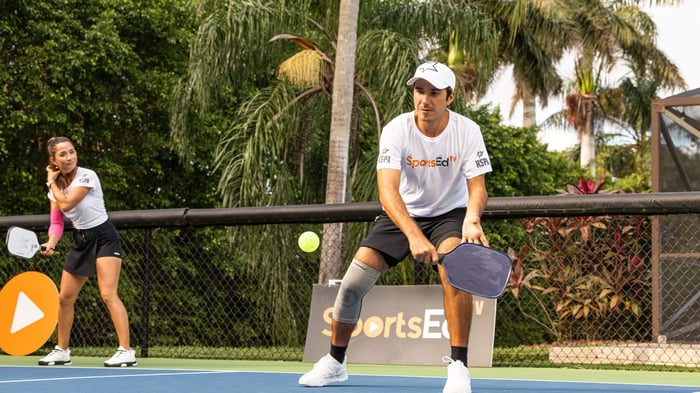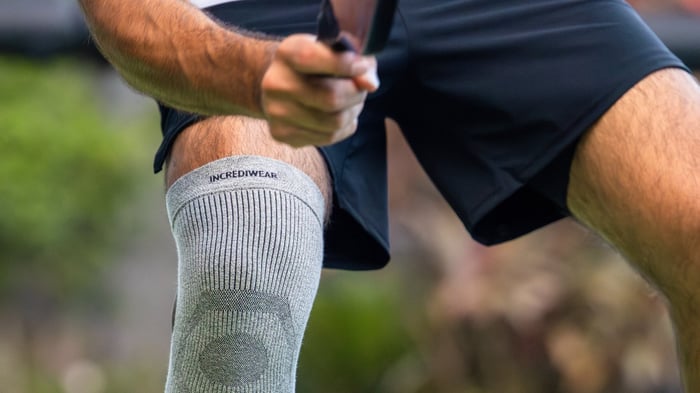Key takeaways:
Mastering essential pickleball techniques like proper stance, serve variations, and dinking can significantly elevate your game and give you a competitive edge.
Strategic shot placement, seamless court movement, and effective communication with your doubles partner are key to dominating rallies and maintaining control during matches.
Investing in performance-ready gear enhances your comfort, confidence, and ability to execute advanced techniques, helping you play better and look incredible on the court.
Dominating competitive pickleball takes more than just powerful shots; it requires a complete set of skills that work together to elevate your game. Consistent serves, smart shot placement, and smooth, intentional movement across the court form the foundation of a winning strategy. These skills aren’t standalone; they build on one another, creating a rhythm and confidence that set top players apart.
Every detail matters, from how you grip your paddle and position your stance to executing spin shots and controlling court positioning. When solid technique is paired with high-quality gear, the difference is undeniable. Whether you’re refining your third shot drop, sharpening your dinks, or syncing up better with your doubles partner, mastering both the basics and the advanced tactics gives you the edge to compete with precision and control.
At PB5star, we’re built for players who take their growth seriously. Our performance-driven apparel is made to support every step of your training, keeping you comfortable, confident, and ready to level up; alongside a community that pushes you to play harder, think smarter, and aim higher.
Defining essential pickleball techniques for competitive play
Essential pickleball techniques represent the core skills that create a reliable foundation for tournament success, regardless of your current playing level. These fundamentals differ from flashy shots or advanced maneuvers because they directly impact your ability to control rallies, reduce unforced errors, and maintain consistency under pressure. When tournament players focus on mastering serve consistency and tactical shot placement rather than attempting low-percentage winners, they build the systematic approach that separates championship-level play from recreational games.
The most effective skilled athletes understand that these core abilities work as an interconnected system where each skill amplifies the others. Your serve sets up your positioning strategy, which influences your third shot selection, which determines your net approach and volley opportunities. This systematic thinking explains why practicing with slightly better players accelerates improvement more than playing with lower-skilled opponents. When you're forced to execute these fundamentals against superior competition, you develop the mental toughness and precision required for genuine tournament pressure where mistakes have real consequences.
Perfecting your proper pickleball stance
Your proper pickleball stance serves as the launching pad for every successful shot and defensive move you make during competitive play. The foundation starts with positioning your feet shoulder-width apart while maintaining slightly bent knees, creating an athletic posture that promotes quick movement and optimal balance across the court. This wide base allows you to generate power from your legs while maintaining the stability needed to execute precise shots under tournament pressure, where even small positioning errors can cost you points against skilled opponents.
Weight distribution becomes the game-changer that separates reactive players from proactive competitors who control rallies. Keeping your weight centered on the balls of your feet rather than your heels creates the dynamic readiness that enables faster directional changes and quicker responses to your opponent's shots. Players who adopt this forward-leaning weight distribution report having better reach and quicker reaction times during matches, making them more effective at covering the court and maintaining offensive positioning throughout extended rallies.
Smart competitors understand that stance adaptation based on court position and anticipated shots gives them a tactical advantage over opponents who use the same static positioning regardless of game situations. When you're positioned at the baseline preparing for a potential third shot drop, a slightly more open stance allows for better weight transfer and shot preparation, while net positioning requires a more compact, ready stance that facilitates quick volley exchanges.
Exploring pickleball serve variations
Developing a diverse serving arsenal transforms your ability to control rallies from the very first shot, giving you the tactical flexibility that competitive players need to stay ahead of opponents who expect predictable patterns. Mastering multiple pickleball serve variations allows you to exploit weaknesses in return games while keeping opponents constantly adjusting to new challenges, since strategic serving focuses on building advantageous positions for subsequent shots rather than simply getting the ball in play.
Power Serve: Drive a fast, low serve toward the weaker side to disrupt rhythm and force rushed returns that set up easier third shots for your team.
Drop Serve: Allow gravity to work in your favor by dropping the ball before contact, which improves accuracy and consistency while enabling subtle spin variations.
Spin Serve: Add topspin or slice to generate unpredictable bounces that challenge timing and positioning, leading to weaker returns or outright errors.
Lob Serve: Target deep corners with a high-arcing serve that pushes aggressive returners away from the net and opens opportunities for offensive third shots.
Placement Serve: Focus on consistent targeting of specific zones over raw power, using precise placement to move opponents and gain court positioning advantages.
Body Serve: Aim directly at the torso to jam swing mechanics and force awkward returns that often result in pop-ups or weak shots you can attack.
Dinking in pickleball for control and finesse
Dinking is where strategy takes center stage in pickleball. It's a soft, deliberate exchange that slows the game down and forces aggressive opponents to play with more control. Instead of overpowering your shots, you're using placement, patience, and finesse to outmaneuver them, turning their strengths into weaknesses. A well-placed dink can neutralize even the strongest attacks, making opponents stretch, reach, and eventually crack under pressure.
To master this skill, focus on keeping your grip light and your hands relaxed. Let the paddle absorb the ball’s energy rather than redirecting it aggressively. The goal is a soft, low arc that stays just out of reach and too low to attack. Target awkward zones like the backhand or the sidelines to disrupt your opponent’s balance. When you mix up placement and tempo, you control the rhythm of the rally and create opportunities to strike when they’re off-balance.
Executing the third shot drop with precision
The third shot drop is one of the most important shots in the game; it shifts you from defense to offense in a single move. When opponents are already at the kitchen line, this shot lets you take back control by slowing the rally and buying yourself time to move forward. A well-placed drop can completely change the tone of the point, neutralizing their position and opening space for your team to attack.
To make it effective, focus on a gentle arc that just clears the net and lands softly in the non-volley zone. Add topspin when needed to bring the ball down quickly and keep it low after the bounce. Placement and timing are everything. Practice hitting it while moving in from the baseline so it becomes second nature under pressure. The more confidently you can execute the third shot drop, the more you’ll control the flow of the match.
Defensive techniques and transition zone tactics
Good defense in pickleball is about more than just keeping the ball in play; it’s about using smart shot selection to regain control. When aggressive players push the pace, your job is to absorb their pressure and force them into longer rallies. Precision and patience allow you to slow things down, return tough shots with accuracy, and wait for your chance to turn the tables.
The transition zone, that tricky space between the baseline and the kitchen, is where many rallies are won or lost. Rushing forward can leave you exposed, so the key is strategic movement, advancing only when your shot gives you the time and space to do so safely. Soft drop shots and resets are essential here, helping you move in without giving up court control. When done right, your defense becomes your setup for the win.
Mastering court positioning strategies with your partner
Great doubles teams rely on more than individual talent; they succeed through smart, coordinated court positioning. When you and your partner move as one, you cover more ground, reduce openings, and apply constant pressure. This kind of teamwork turns rallies in your favor by forcing opponents to work harder for every point and giving you more opportunities to capitalize on mistakes.
Communication is the backbone of strong positioning. It's not just about staying side by side; it’s about reading each other’s movements, shifting coverage, and staying ready to attack or defend as a unit. And when you're both wearing gear that supports unrestricted movement and all-day comfort, like PB5star’s performance apparel, you're free to focus fully on the strategy that wins matches.
Blocking and resetting shots under pressure
When you’re under fire at the net, blocking isn’t about hitting back hard; it’s about absorbing speed and controlling the next move. A relaxed grip and steady paddle position help you take the pace off your opponent’s shots, turning a fastball into a soft return that resets the rally. Instead of trying to match power with power, smart blocking lets you regain control without taking unnecessary risks.
Resetting under pressure works the same way. By dropping the ball softly into the kitchen, you force your opponent to slow down and play with more care. These resets frustrate power hitters and give you time to reposition and prepare your next move. When done consistently, blocking and resetting shift the momentum of the rally, turning high-pressure moments into opportunities for smart, strategic play.
Play better, look better, and join the PB5star community
Building a solid foundation with these thirteen core techniques can take your game from reactive to strategic, giving you the edge that tournament-level players rely on. From mastering your grip and positioning to sharpening your shot selection and mental focus, these fundamentals shape a complete skill set that separates serious competitors from casual players.
And as your game grows, the gear you wear should keep up. PB5star’s performance-ready apparel is designed to support your training while letting your style speak for itself. When you look sharp and feel confident, it shows on the court and connects you with a community of players who share your drive to keep improving.
FAQs
What are the most common mistakes players make with grip and stance?
The most overlooked grip error involves failing to adjust grip pressure based on shot requirements. Many players use the same firm hold for powerful drives and delicate dinks, limiting their shot versatility. Competitive players also frequently neglect grip transitions between forehand and backhand shots, causing delayed reactions during fast exchanges. For stance issues, the biggest problem occurs when players become too static, maintaining the same positioning regardless of court location or opponent tendencies, rather than adapting their setup to match tactical situations and improve their overall game confidence.
How can I add more variety to my serves without sacrificing consistency?
Build your serving arsenal systematically by perfecting placement variations before introducing spin or pace changes, since mastering different serve types requires consistent mechanics as your foundation. Practice new serves during warm-up sessions and recreational games, tracking your success rate to ensure each variation maintains at least 80% accuracy before using it in competitive play. Develop a serving sequence that alternates between your most reliable serve and one variation, creating unpredictability while maintaining the consistency that prevents easy returns from experienced opponents.
What drills help improve dinking and volley control?
Target practice using cones or markers in the non-volley zone builds precision while simulating match pressure - aim for 15 consecutive shots to each target before moving to the next zone. Partner-based rapid-fire drills from mid-court distance develop the quick reflexes needed for net exchanges, with regular practice sessions showing measurable improvement in reaction time and paddle control. Cross-court dinking patterns challenge your ability to maintain control while moving laterally, preparing you for the dynamic positioning required during competitive rallies.








